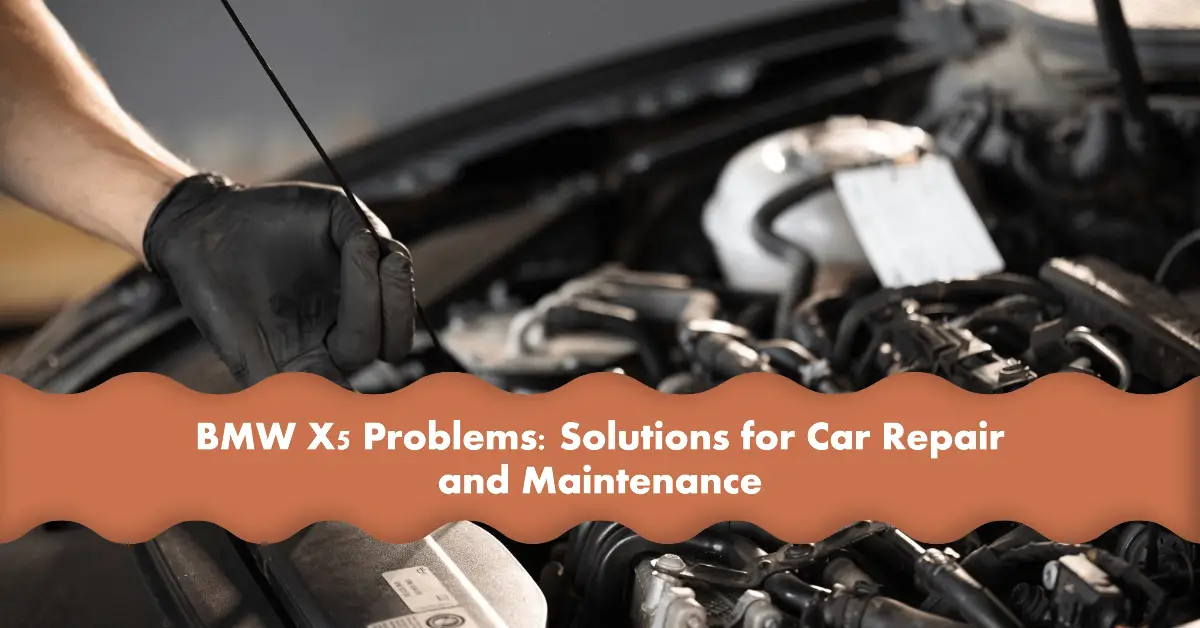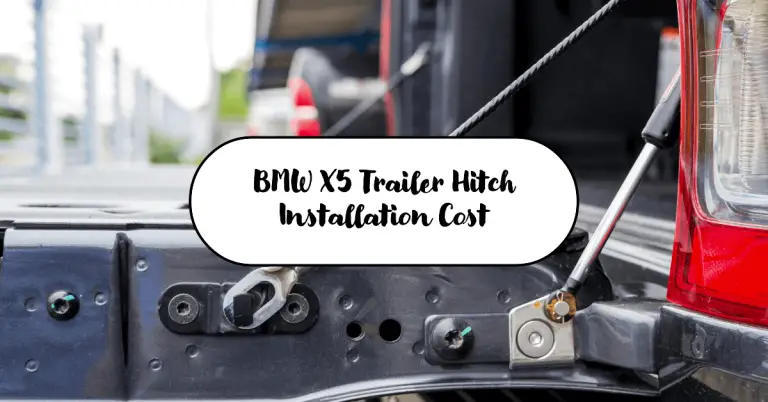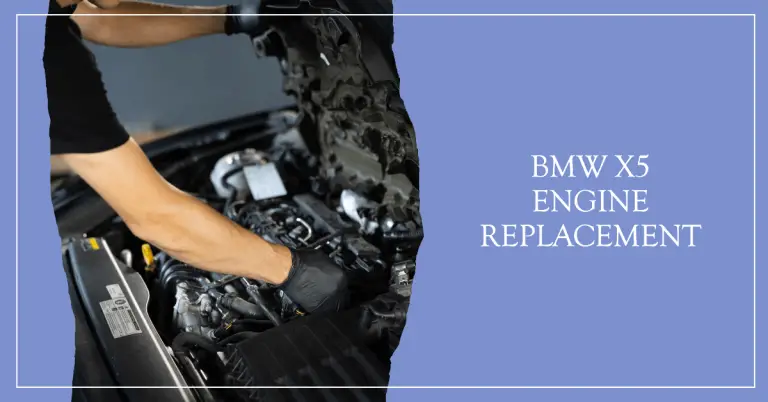Common BMW X5 Problems: Guide to Troubleshooting & Fixing Issues
The BMW X5 is one of the most popular luxury SUVs on the market, combining responsive handling, a refined interior, and robust power from its inline 6-cylinder and V8 engines. However, even well-engineered vehicles develop issues over time. So what are the most common mechanical problems with the BMW X5? While no vehicle is immune from eventual repair needs, being informed about the X5’s problem areas can help owners identify issues early and understand options to get their SUV back on the road. This complete guide covers the most prevalent BMW X5 problems reported by owners, along with diagnostic tips and proven repair solutions.
Introduction
First introduced in 1999, the BMW X5 was one of the earliest luxury crossover SUVs and has remained a segment sales leader for over two decades. Now in its fourth generation, the contemporary X5 continues the tradition of responsive handling, luxurious cabins, and potent powerplants. However, even the best engineered vehicles eventually show their age and accumulate wear in certain components. By learning about the X5’s most vulnerable systems, owners can help catch issues in their infancy and understand if repairs are needed.
This guide will cover the major mechanical problem areas reported by X5 owners through forums, consumer sites, and BMW repair specialists. We’ll explore common issues with the engine, transmission, suspension, steering, electrical systems, and more. For each prevalent problem, we’ll discuss repair options, expected costs, and tips to avoid these issues down the road. Whether you’re considering purchasing a used X5 or already own one, understanding these vulnerabilities will help you make informed maintenance decisions.
While BMWs have a reputation for being pricier to maintain, not every repair requires a trip to the dealership. Many issues can be addressed by a competent independent mechanic at a fraction of the cost. We’ll highlight which fixes are DIYable vs those best left to the professionals. So let’s get started exploring the most common mechanical problems reported in the BMW X5.
Common Engine Issues
As the beating heart of the X5 driving experience, it’s no surprise the engine accounts for many of the commonly reported problems. BMW’s smooth inline 6-cylinder TwinPower turbo engines deliver ample thrust while the muscular V8s motivate the X5 M trims. But all engines have their vulnerabilities. Here are some prevalent problems owners report with X5 powerplants.
Burning Oil
One of the most common issues reported across all X5 engines is excessive oil consumption between change intervals, often accompanied by blue smoke from the tailpipe. The root causes stem from two primary component failures:
- Worn valve stem seals – These seals surround the valve stems to control oil flow into the combustion chambers. When they harden and crack with age, oil can be pulled down the guides and burned in the cylinders. Replacing the seals involves a significant tear down.
- Worn piston rings – The rings maintain a tight seal against cylinder walls to prevent oil from leaking past into the combustion chamber. Over time, heat and friction wear the rings and gaps develop, allowing oil to be consumed during combustion. Fixing requires removing and replacing pistons and rings – an extensive repair.
Excess oil consumption is more prevalent on older, high-mileage X5 models but can happen on any engine. Other symptoms beyond smoke and low oil levels include fouled spark plugs. If you detect burning oil, be vigilant about checking levels frequently. Top off when needed and weigh repair options before consumption gets out of hand.
Rough Idle and Stalling
A rough or erratic idle, particularly when stopped at lights, is another common complaint. The uneven running may be accompanied surging RPMs or even occasional stalling. Typical causes include:
- Failing VANOS system – BMW’s variable valve timing system that can malfunction with age. Replacing the VANOS solenoids may cure minor issues, but worn sprockets and camshaft actuators require more extensive repairs.
- Cracked vacuum lines – The plastic lines become brittle and develop cracks over time. Inspect lines and replace any damaged pieces.
- Carbon build-up – Carbon deposits on intake valves and in combustion chambers cause uneven running. Cleaning the valves and pistons resolves this.
- Dirty mass airflow sensor – The MAF measures air entering the engine. Contaminants on the sensor throw off readings and engine performance. Carefully cleaning the sensor may fix the issue.
Diagnosing the specific root cause requires hooking up a scan tool to read engine codes and data parameters. Repairs vary from simple vacuum line replacements to rebuilding VANOS and cylinder head components – so proper diagnosis is key.
Overheating Issues
Given BMW’s reputation for robust cooling systems, overheating is not an epidemic problem but still crops up on higher-mileage X5s. Common causes include:
- Faulty water pump – The water pump circulates coolant through the engine and radiator. A pump on its way out exhibits leaks or bearing noises and should be replaced before failing altogether.
- Thermostat failure – A stuck closed thermostat prevents coolant from circulating properly, leading to overheating. Simple thermostat replacement resolves it.
- Cooling system leaks – Small leaks in hoses, gaskets, and plastic end tanks deplete coolant over time. Detecting and sealing any external leaks is key. Pressure testing the system helps identify problem areas.
- Bad radiator cap – The cap maintains the proper pressure inside the cooling system. A cap unable to hold pressure allows coolant to escape and overheating results.
When an overheating X5 comes into the shop, mechanics will test the pump, thermostat, and pressure cap before looking for leaks. Replacing whichever component failed restores normal operating temperatures. Proactive coolant flushes help maintain the system too.
Transmission Problems
Like most vehicles, the X5’s automatic transmission is vulnerable to eventual wear and tear. BMW has installed a few different transmission models over the years, including 6-speed Steptronics and 8-speed ZF automatics. Some common problems X5 owners report from the transmission:
Harsh Shifting
One prevalent complaint is rough, delayed, or hard shifts, especially when cold. Typical causes of shifting problems include:
- Low transmission fluid level – The torque converter and internal components bathe in fluid. Low levels cause hydraulic pressure loss and engagement issues. Check for leaks and top off if needed.
- Dirty transmission filter – Transmissions have a replaceable filter to trap contaminants. A clogged filter impedes fluid flow and pressures.
- Worn internal seals and clutches – Transmissions depend on delicate steel clutch plates, seals, and gaskets. Age and mileage take a toll on durability, causing slippage and shifts delays.
Replacing dirty fluid and the filter can sometimes resolve shift concerns, but internal wear necessitates transmission rebuilds or replacements. Diagnosing the root cause first is key. Harsh shifts signify developing problems, so don’t ignore symptoms.
No Reverse Gear
Another common complaint, especially on older X5s, is the inability to select reverse. This symptom points squarely to internal transmission issues. Specifically:
- Worn reverse clutch drum – The drum contains the clutch pack responsible for reverse gear engagement. Over time, heat and friction wear the drum’s seal surface.
- Damaged reverse gear set – Excessive stress can literally break gear teeth inside the transmission, preventing reverse from engaging.
- Faulty valve body – Hydraulic valves control internal clutches and gears. Malfunctions prevent shifting into reverse.
- Bad transmission computer – On newer models, a faulty TCM prevents actuating reverse gear, though this is less common.
No reverse requires transmission replacement or a full rebuild with new drums, gears, seals, and clutches. While expensive, it beats running a vehicle unable to back up! Catching problems before complete reverse failure allows for less drastic repair options.
Slipping Between Gears
Transmission slipping exhibits as a lack of power during acceleration. High RPMs with little speed increase signals failing internal components. Usual causes include:
- Insufficient fluid level – Low fluid causes inadequate hydraulic pressure for proper clutch apply. Check for leaks. Top off if needed.
- Worn clutch packs – The stacked clutch plates transfer rotation through gear sets. Wear and distortion cause them to slip and lose grip.
- Leaky seals and gaskets – Seals designed to keep ATF inside deteriorate with age. External leaks reduce volume and pressure essential for operation.
- Damaged gear synchronizers – These parts match speeds for smooth shifts. Broken synchronizers cause slippage between gears.
Mild slippage may be remedied by a fluid change and filter replacement to restore pressures. But worn hard parts will necessitate transmission overhaul or replacement. Catching problems early improves the prognosis and avoids full failure.
Suspension and Steering System Issues
Given its sporting pedigree, the BMW X5 utilizes a sophisticated suspension design and steering system to provide responsive handling and a compliant ride. Common problems reported in these areas are:
Shaking Steering Wheel
Excessive vibration or shaking emanating through the steering wheel typically signals an wheel balance issue or component failure in the suspension or steering. Failure spots include:
- Unbalanced tires – Out of round tires or overlooked weights cause steering wheel shake when rotating. Balance or replace tires.
- Worn wheel bearings – Bearings allow smooth wheel rotation. Damaged bearings introduce play and vibration.
- Loose suspension parts – Bad ball joints, control arm bushings, struts, and links send tremors through the chassis and wheel. Inspect and replace worn components.
- Loose steering linkage – The steering gearbox and intermediate shaft to the rack get worn. Tightening connections may help.
Diagnosing bad wheel bearings just takes a visual inspection and wheel play check. The rest requires getting under the chassis and checking for looseness in each component while having an assistant rock the vehicle.
Uneven Tire Wear
Spotting inside or outside edge tire wear indicates an alignment issue. Causes include:
- Worn ball joints and bushings – Defective joints and bushings throw off suspension geometry and chew up tires. Align and replace worn pieces.
- Bent suspension components – Accident damage can bend control arms, struts, and links leading to alignment issues. Inspect closely for damage.
- Failed air suspension – Models equipped with electronic air suspension can develop leaks and ride height problems, causing alignment and wear concerns.
Inspecting tire wear patterns during rotations reveals alignment problems early. Addressing worn parts quickly restores proper alignment and prevents premature tire replacement.
Air Suspension Problems
A common problem area on X5s equipped with electronic air suspension involves spring struts and the air pump. Typical issues include:
- Failed air struts – Air springs develop leaks or compression issues over time. Replacing just the strut maintains the system.
- Faulty air compressor – The electric air pump supplies the struts and can fail with age. Pump repairs or replacements keep systems operational.
- Blocked air lines – Kinked or blocked air supply lines cause suspension ride height problems. Inspect lines thoroughly for restrictions.
- Ride height sensor – This sensor monitors vehicle height and signals the compressor. Defective sensors cause intermittent issues.
Air suspension problems often start as slow leaks down over a few days. Catching leaks early allows for strut replacement before complete failures damage other components.
Electrical System Issues
Today’s complex vehicles contain miles of wiring and scores of onboard computers controlling everything from engines to transmissions, brakes, steering, safety systems, and more. The X5 has its share of troublesome electrical issues, including:
Dead Battery
The battery constantly cranking without starting, or needing frequent jump starts indicates a deeper issue is at play. Typical causes include:
- Faulty alternator – The alternator recharges the battery while driving. Bad diodes don’t allow proper charging, slowly draining the battery when parked.
- Parasitic battery drain – Something stays on when the vehicle is off, draining the battery. The glove box or trunk lights are common culprits. Disconnect cables to isolate the circuit.
- Damaged battery cables – Fraying or corroded cables cause excessive resistance preventing proper starting and charging.
- Bad starter motor – Starters can develop dead spots, requiring prolonged cranking before engaging. This rapidly drains the battery.
Diagnosing parasitic drains requires methodically disconnecting fuses while monitoring current draw with a multimeter. Isolate the problem circuit before replacing components.
Electrical Gremlins
Intermittent glitches like warning lights illuminating with no clear cause, features malfunctioning, windows not working all trace to electrical issues like:
- Faulty ground wires – Grounds channel stray current safely away. Corroded grounds cause electrical chaos. Clean all ground points thoroughly.
- Short circuits – Bare wires contacting the body or each other leads to shorts blowing fuses and causing malfunctions. Meticulously inspect wiring for damage.
- Bad control modules – Defective components like ABS module, transmission computer, and body modules wreak havoc when they fail. Scanner diagnostics pinpoint suspect modules for replacement.
Tracking down open circuits and short takes patience – visually inspecting wiring harnesses and using a multimeter to check connections. But fixing grounds and replacing damaged sections resolves most issues.
Check Engine Light
Modern vehicles have hundreds of sensors and computers monitoring operation. The check engine light (CEL) illuminates when the onboard diagnostic system detects a malfunction. Some common CEL triggers include:
- Loose or cracked sensors – Engine sensors for oxygen, cam timing, knock, and more can crack or lose connections intermittently triggering the light.
- Leaky emissions components – Faulty purge valves, gas caps not sealing properly switch the light on due to detected leaks. Resealing or replacement fixes it.
- Ignition system faults – Coil and spark plug faults illuminate the light and cause misfires. New plugs and coils typically resolve it.
- Loose fuel filler cap – A simple loose gas cap allows fuel vapors to escape, turning on the CEL after emissions system detects the leak. Tightening the cap fixes this nuisance light cause.
Without decoding the CEL’s specific trouble codes, it’s guessing what triggered it. A scanner tool provides the code numbers to accurately diagnose issues. Address the failure indicated before the CEL returns.
Avoiding Major Repairs
While no vehicle lasts forever without needing some repairs eventually, proactive maintenance helps minimize problems and preserve the X5’s longevity and reliability well into the six-figure mileage club. Here are some tips to get there:
- Follow the factory maintenance schedule in the owner’s manual for fluid changes, filters, belts, and flushes. Don’t cut corners or delay scheduled upkeep.
- Inspect engine oil and coolant levels frequently. Top off when low to prevent damage from running too low.
- Watch for leaks under the engine and transmission that signal problems. Identify and fix external leaks promptly before major issues result.
- Listen and feel for developing problems like slipping transmission or grinding brakes. Nipping issues in the bud limits damage and savings.
- Install quality gas and fluids to avoid premature contamination and breakdown. Fuel injector cleaner added periodically keeps things clean.
- Consider an extended warranty once the factory coverage expires for added protection from big repair bills down the road.
Preventative maintenance is the best way to stave off repairs and help your X5 go the long haul. But knowing the most common problems these SUVs experience allows you to make informed decisions when issues do pop up.
Conclusion
The BMW X5 established the luxury crossover segment by blending responsive handling, refined cabins, and potent powerplants into a versatile SUV package. However, even well-engineered vehicles like the X5 experience mechanical issues after years of operation. By learning the most common problem areas with the engine, transmission, suspension, steering, electrical systems, and more, X5 owners can identify issues in their early stages and weigh repair options. Addressing problems early reduces damage and costs in the long run.
While some issues necessitate trips to the dealership, many can be reliably repaired by competent independent BMW specialists for much lower cost. Proper routine maintenance and diligent inspections also helps minimize problems and keep your X5 running beautifully for years. Hopefully this overview of prevalent X5 problem areas provides awareness so you know what to watch out for and can make informed repair decisions. With some TLC, the X5 can continue delivering years of driving enjoyment.







